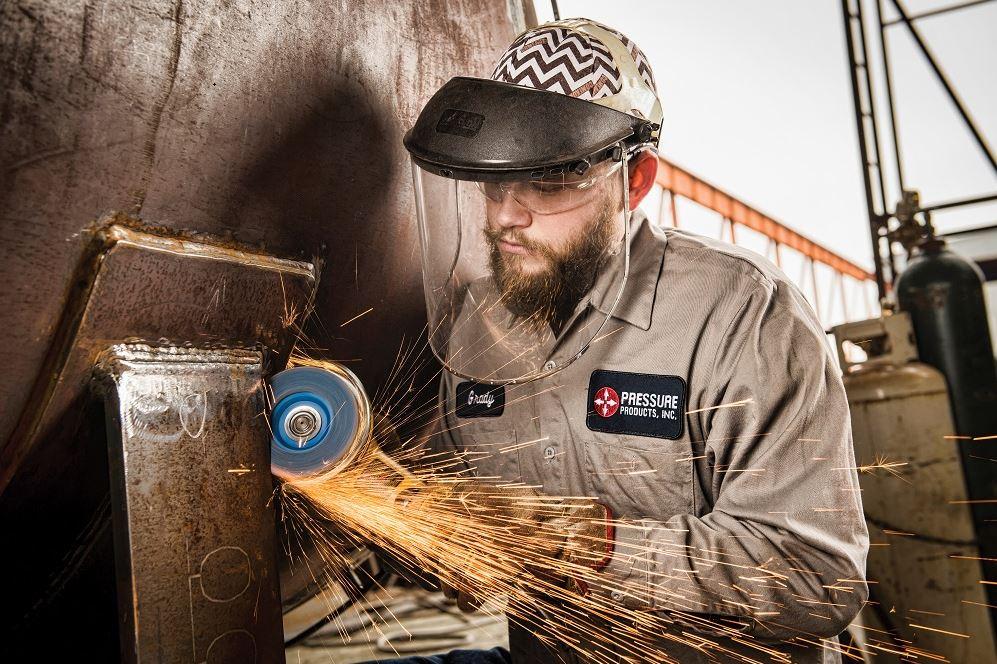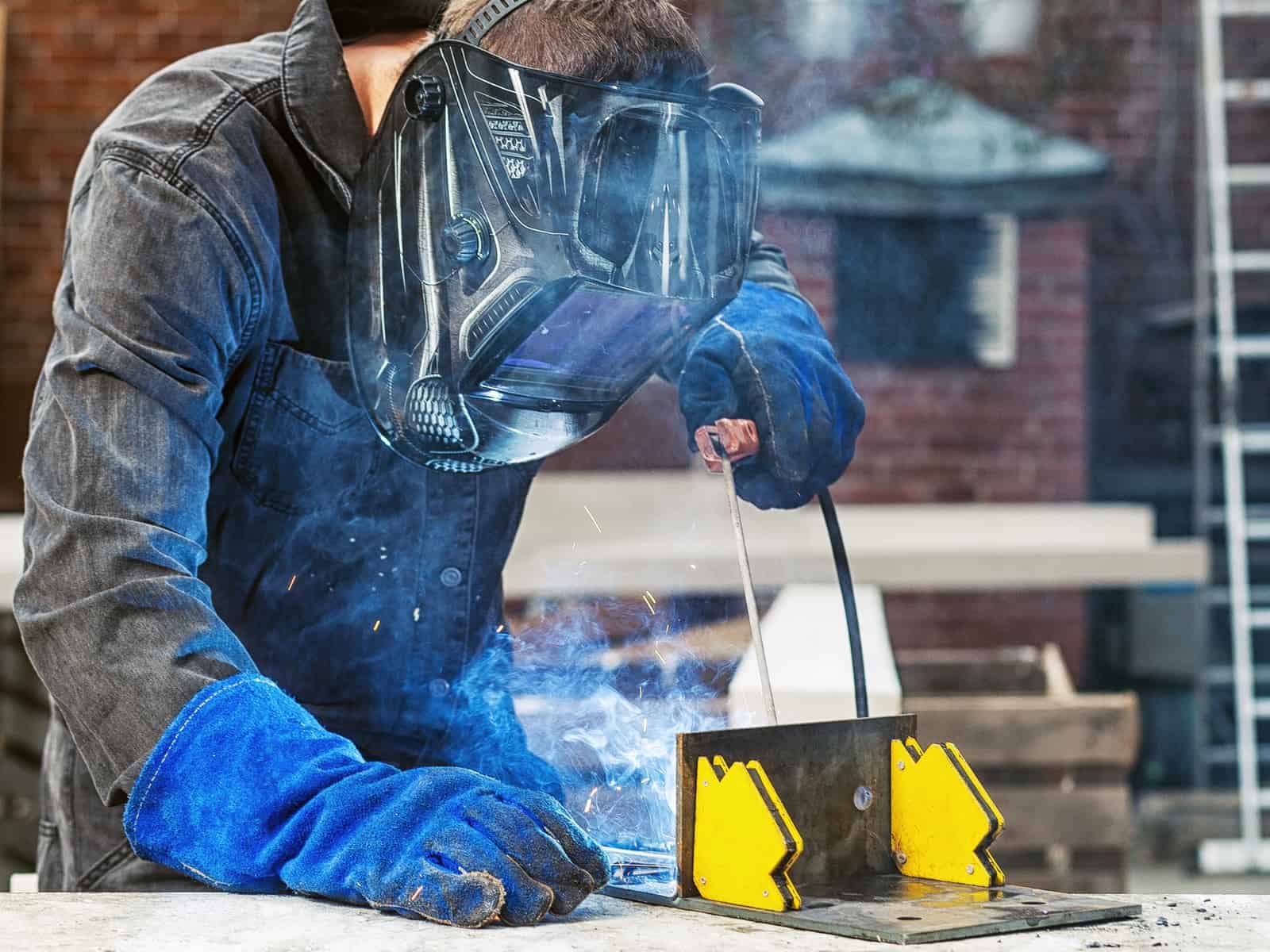Typical Welding Repair Work Issues and Exactly How to Address Them Successfully
Welding repairs commonly come across a series of issues that can endanger the integrity of the end product. Common troubles consist of insufficient penetration, porosity, and misalignment, among others. Each issue provides distinct difficulties that require particular techniques for resolution. Understanding these problems is necessary for welders aiming to enhance their abilities and outcomes. This discussion will explore these common welding repair service problems and effective methods to resolve them.
Inadequate Infiltration
Insufficient penetration happens when the weld metal stops working to fully fuse with the base material, leading to weak joints and prospective architectural failures. This concern often stems from insufficient warm input, inaccurate electrode angle, or inappropriate welding speed. Welders may experience inadequate penetration as a result of a mistake of the essential specifications for a particular material thickness or type. In addition, contamination on the base product's surface can hinder reliable bonding, worsening the trouble. To deal with poor infiltration, welders need to guarantee ideal settings on their devices and maintain a clean job surface. Regular examination of welds is advised to identify any type of deficiencies early, enabling prompt modifications and the avoidance of endangered architectural stability in bonded settings up.
Porosity
Porosity is a common problem in bonded joints that manifests as small gas bubbles caught within the weld steel. This problem can jeopardize the honesty of the weld, causing decreased stamina and possible failing under tension. Montana Mobile Welding and Repair Welding. Porosity generally occurs from contamination, moisture, or inappropriate welding techniques, which allow gases to get away into the liquified weld swimming pool. To attend to porosity, welders must ensure appropriate surface preparation, keep a clean working atmosphere, and utilize appropriate welding specifications. Furthermore, choosing the best filler material and protecting gas can reduce gas entrapment. Normal inspection and testing of welds can assist recognize porosity early, assuring timely rehabilitative actions are taken, thereby maintaining the quality and integrity of the bonded structure
Imbalance
Imbalance in welding can occur from numerous aspects, including incorrect arrangement and thermal development. Recognizing the origin triggers is vital for reliable resolution. Several improvement techniques are readily available to realign parts and ensure structural honesty.
Sources of Imbalance
Welding imbalance typically stems from a range of underlying concerns that can jeopardize architectural stability. One main cause is improper fit-up of elements prior to welding, which can cause gaps and unequal surfaces. Variants in thermal growth during the welding process can likewise lead to distortion, particularly if the materials being joined have different coefficients of expansion. Additionally, insufficient fixturing and clamping might fall short to hold parts safely in location, resulting in movement throughout welding. Improperly conserved equipment, consisting of welding equipments and devices, may introduce disparities in the weld bead, additional adding to imbalance. Ultimately, operator error, coming from insufficient training or experience, can also play a significant function in producing misaligned welds.
Improvement Strategies Available
Attending to misalignment efficiently requires a combination of rehabilitative methods tailored to the particular problems handy. One typical technique is the use of jigs or fixtures to hold elements in the proper position throughout welding, making certain consistent alignment. In addition, preheating the materials can help in reducing distortion and improve fit-up. For substantial misalignment, mechanical realignment methods, such as using hydraulic jacks or clamps, can be used to correct the placement before welding. Post-weld warm treatment might likewise be necessary to alleviate anxieties triggered by imbalance. Finally, cautious inspection and adjustment during the setup phase can protect against imbalance issues from becoming significant troubles, promoting a smoother welding process and improving general structural stability.
Distortion
Distortion is an usual obstacle in welding that can develop from different variables, including unequal home heating and air conditioning. Recognizing the root causes of distortion is essential for implementing effective prevention techniques. Addressing this problem not only enhances architectural honesty but additionally boosts the total high quality of the weld.
Sources of Distortion
When subjected to the intense warmth of welding, products often undergo adjustments that can bring about distortion. This sensation primarily occurs from thermal expansion and contraction during the welding procedure. As the weld location heats up, the product expands; upon air read this post here conditioning, it gets, which can create interior anxieties. Furthermore, irregular heating throughout a workpiece can aggravate these stress and anxieties, resulting in bending or flexing. The sort of material likewise plays a significant duty; metals with differing thermal conductivity and coefficients of growth might react in a different way, resulting in unforeseeable distortions. Poor joint style and inadequate fixturing can add to misalignment throughout welding, increasing the likelihood of distortion. Recognizing these causes is important for efficient welding fixing and avoidance approaches.
Avoidance Techniques
Efficient avoidance methods for distortion during welding concentrate on controlling warm input and making sure proper joint design. Preserving a constant warmth input helps to lessen thermal development and tightening, which can cause distortion. Making use of techniques such as preheating the work surface can additionally minimize the temperature level slope, advertising uniform heating. Furthermore, selecting ideal joint layouts, such as T-joints or lap joints, can boost security and lower tension focus. Executing appropriate fixturing to safeguard the work surfaces in position even more aids in maintaining alignment during the welding procedure. Finally, staggered welding series can disperse warmth extra evenly, protecting against local distortion. By applying these strategies, welders can considerably decrease the likelihood of distortion and enhance the overall top quality of their welds.
Splitting
Breaking is an usual issue come across in welding repairs, frequently resulting from numerous elements such as incorrect air conditioning prices, product option, or insufficient joint prep work. The event of fractures can significantly jeopardize the integrity of the weld, leading to possible failures throughout operation. To resolve this problem, welders need to initially assess the origin creates, making sure that products are compatible and suitably selected for the details application. Furthermore, managing the air conditioning rate during the welding procedure is essential; rapid cooling can cause tension and lead to cracking. Appropriate joint design and preparation additionally contribute to reducing the risk. Implementing these strategies can boost weld high quality and durability, inevitably decreasing the probability of fracturing in finished weldments.

Incomplete Blend
A considerable issue in welding repairs is insufficient fusion, which happens when the weld metal does not properly bond with the base material or previous weld passes - Montana Mobile Welding and Repair Fabrication. This issue can cause weaknesses in the joint, possibly endangering the integrity of the bonded structure. go to this website Aspects adding to insufficient blend include inadequate warmth input, improper welding method, and contamination of the surfaces being joined. To resolve this issue properly, welders need to assure proper pre-weld cleaning and surface area prep work, in addition to adjust their welding parameters to accomplish appropriate infiltration and blend. Normal examination throughout the welding process can likewise help recognize incomplete blend early, permitting for timely restorative steps to enhance the overall top quality of the weld
Overheating
While welding repair services can boost structural integrity, overheating presents a considerable challenge that can lead to material degradation. Excessive warmth during welding can change the mechanical buildings of steels, resulting in minimized strength, boosted brittleness, and bending. This sensation is especially vital in high-stress applications where architectural reliability is extremely important. Determining getting too hot can include aesthetic examinations for discoloration or distortion, along with keeping an eye on temperature during the welding procedure. To minimize the dangers linked with overheating, welders should employ suitable methods, such as regulating heat input, readjusting traveling speed, and making use of appropriate filler materials. Furthermore, applying pre- and post-weld heat therapies can aid recover material residential properties and improve the general quality of the fixing, guaranteeing long-term performance and security.
Often Asked Inquiries
What Are the Common Signs of a Welding Issue?

Exactly How Can I Evaluate My Welds for Top quality?
To examine welds for quality, one can use aesthetic evaluations, ultrasonic screening, and radiographic methods. Each technique assures architectural stability, determines flaws, and confirms adherence to defined criteria, inevitably improving the dependability of the welded joints.
What Safety Preventative Measures Should I Take While Welding?
When welding, one must prioritize safety and security by wearing appropriate individual safety equipment, guaranteeing correct ventilation, securing flammable materials away, preserving a tidy work area, and knowing environments to avoid injuries and accidents.
Can I Repair a Weld Without Remodeling the Entire Joint?
Repairing a weld without remodeling the entire joint is possible, depending upon the damage (Montana Mobile Welding and Repair Belgrade Fabrication). Strategies such as grinding, including filler material, or making use of a welding process can properly resolve details defects while protecting the bordering framework
What Devices Are Vital for Efficient Welding Repairs?
Crucial devices for effective welding repair services consist of a welding machine, wire brush, grinder, safety gear, clamps, and filler products. Each tool plays a vital function in guaranteeing quality and safety throughout the repair process. Porosity generally emerges from contamination, dampness, or inappropriate welding techniques, which allow gases to get away right into the molten weld swimming pool. Poorly conserved tools, consisting of welding machines and tools, may present variances in the weld bead, more adding to misalignment. find here When subjected to the intense warm of welding, products often undertake modifications that can lead to distortion. Breaking is a typical concern experienced in welding repairs, usually resulting from various elements such as inappropriate cooling rates, material option, or insufficient joint preparation. A significant problem in welding fixings is insufficient fusion, which occurs when the weld metal does not sufficiently bond with the base material or previous weld passes.